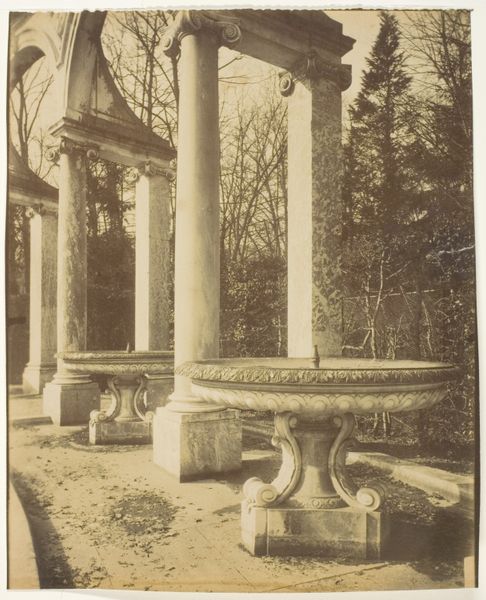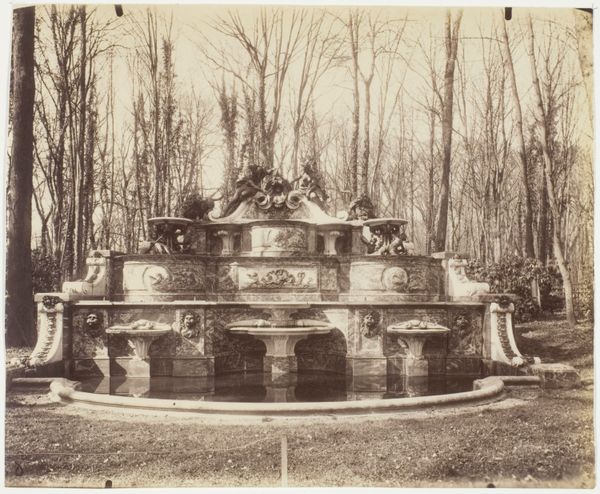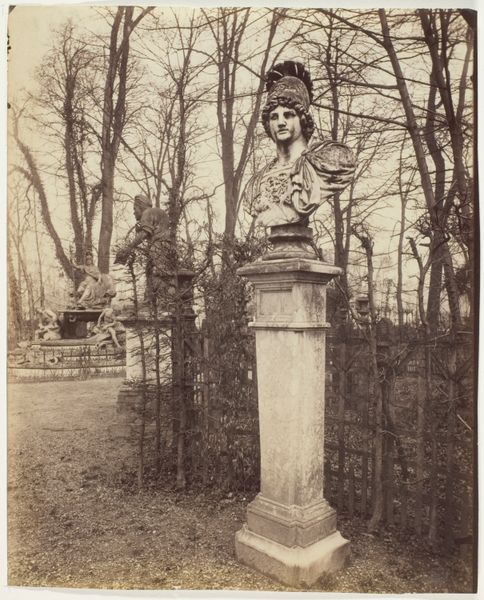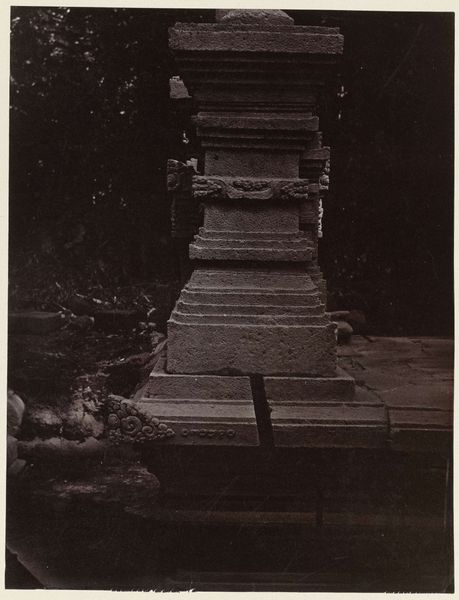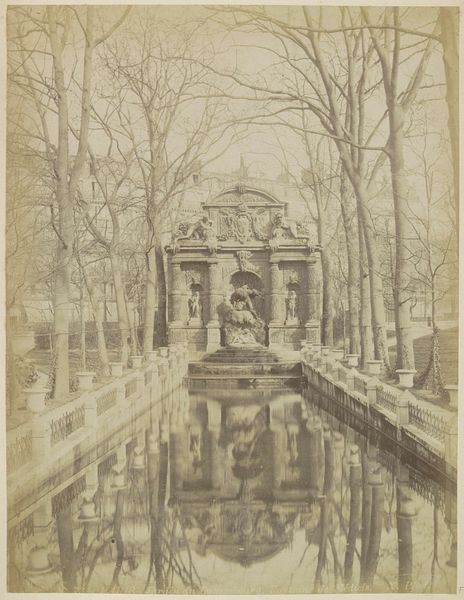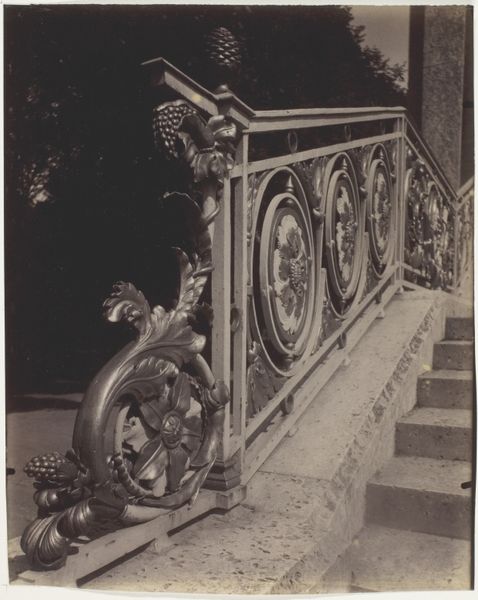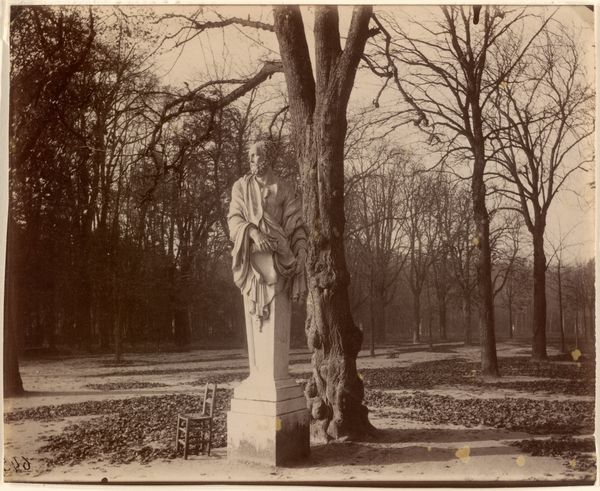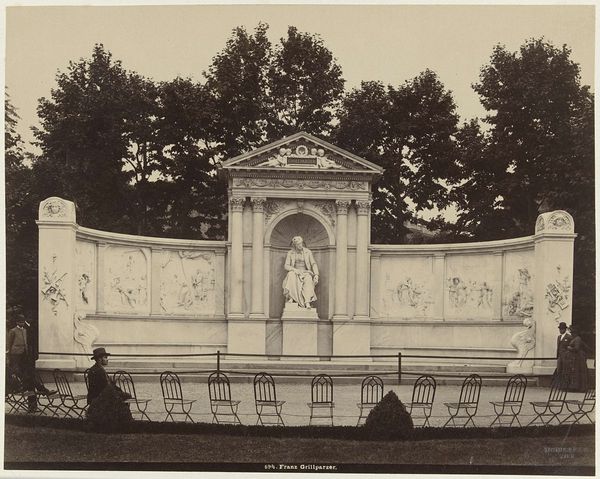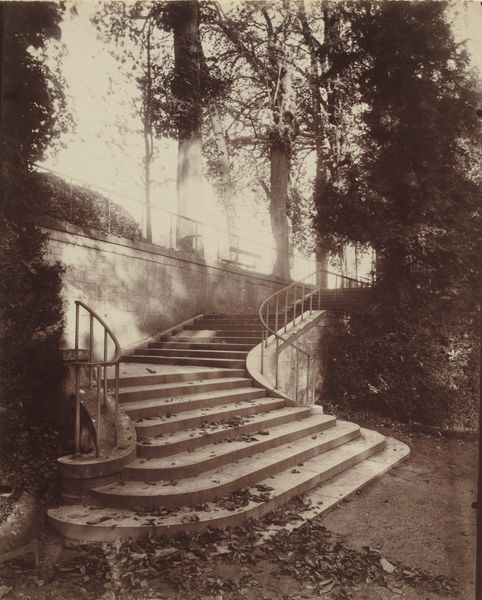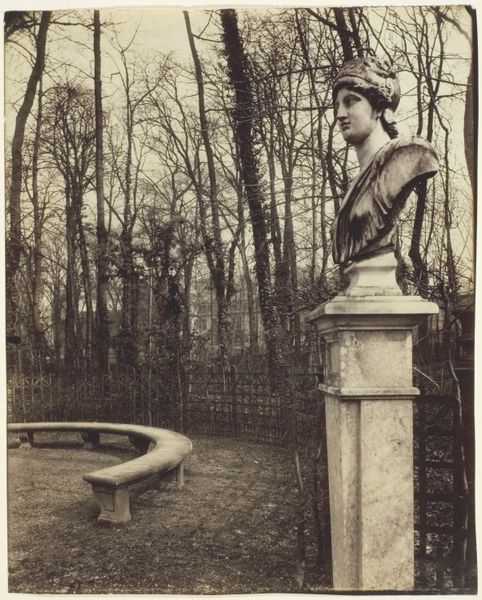
print, photography, site-specific
#
16_19th-century
# print
#
landscape
#
photography
#
site-specific
#
france
#
men
Dimensions: 17.6 × 21.9 cm (image); 17.8 × 21.9 cm (paper)
Copyright: Public Domain
Curator: Immediately, the scene strikes me as melancholic; the light is subdued and reveals a sense of historical distance. Editor: We’re looking at a print entitled, "Versailles, Bosquet de l'Arc de Triomphe" by Eugène Atget, taken in 1904. It is now part of the collection at The Art Institute of Chicago. Curator: The symmetry is strong, but softened by the slightly overgrown nature of the plants and the aging stonework. It brings to mind the performances and power structures that played out in such spaces. I see echoes of theatrical stages designed to showcase the aristocratic elite of their time. Editor: Indeed. Atget's careful eye for detail reveals the meticulous craftsmanship inherent to the bosquet’s design. The spiraling volute and carved ornamentation highlight the artifice that was imposed on nature in the service of absolutist power. I see the process of labor made visible here—it is about controlled manipulation and production. Curator: Yes, Versailles served as a tool of control and propaganda, showcasing the King’s power through landscape architecture. What Atget's image captures, though, is how time has destabilized this rigid performance, subtly challenging the intended permanence and perfection. The undergrowth reclaims its space and disrupts the planned image of a ruling power. Editor: I see your point. However, what interests me most is how this photographic work continues the dialogue on manufactured beauty; this highly mediated site only truly exists through its sustained, constructed and performed maintenance over the generations. Even photography like this relies on and shapes material and cultural conditions. Curator: I find the silence depicted so evocative, as it resonates with current dialogues on historical representation and memory, the impact of power structures on individual narratives, and whose stories are told, or omitted, from dominant accounts of history. Editor: For me, thinking about Atget documenting this engineered scene foregrounds issues concerning the political, economic, and social aspects of production as essential features in its continuing life, past and future. Curator: A single image containing the reverberations of social and political order, wouldn't you agree? Editor: Exactly, but with equal attention to both artifice and labour.
Comments
No comments
Be the first to comment and join the conversation on the ultimate creative platform.
